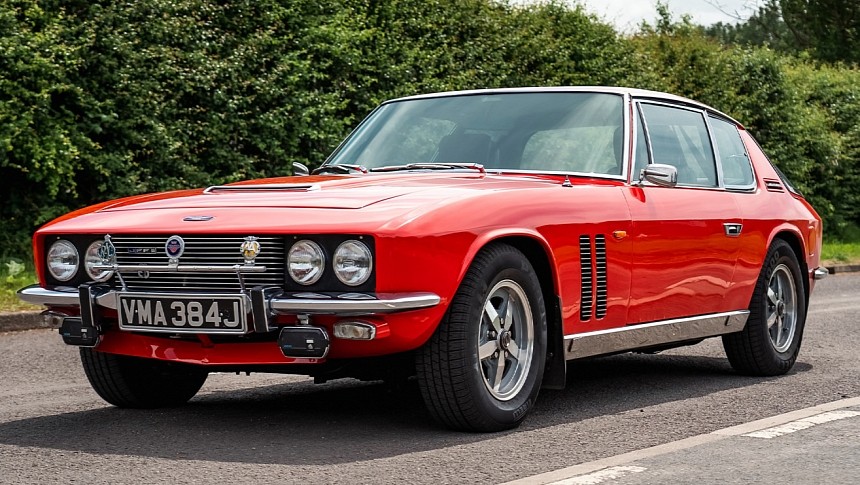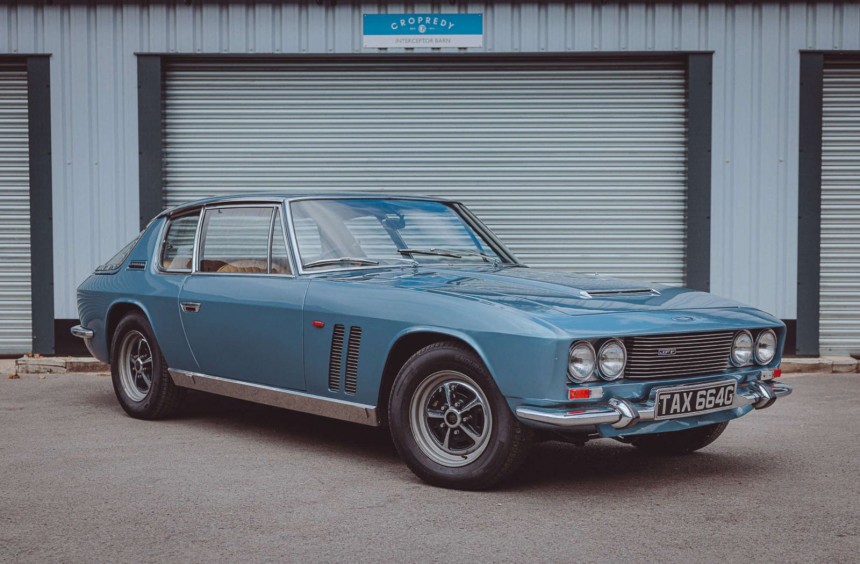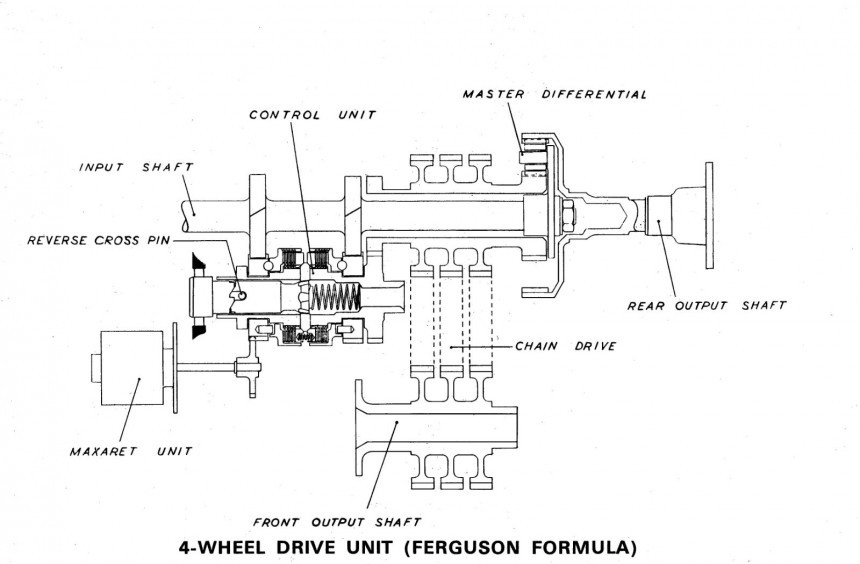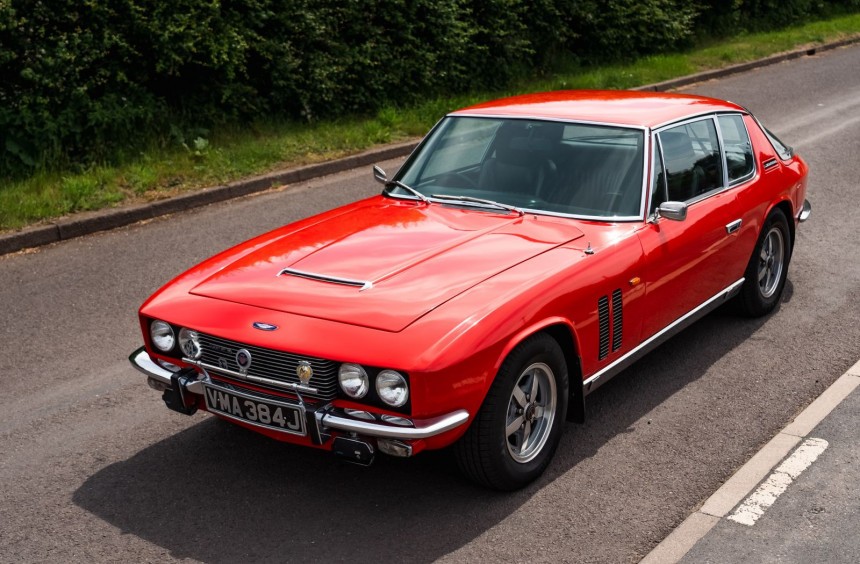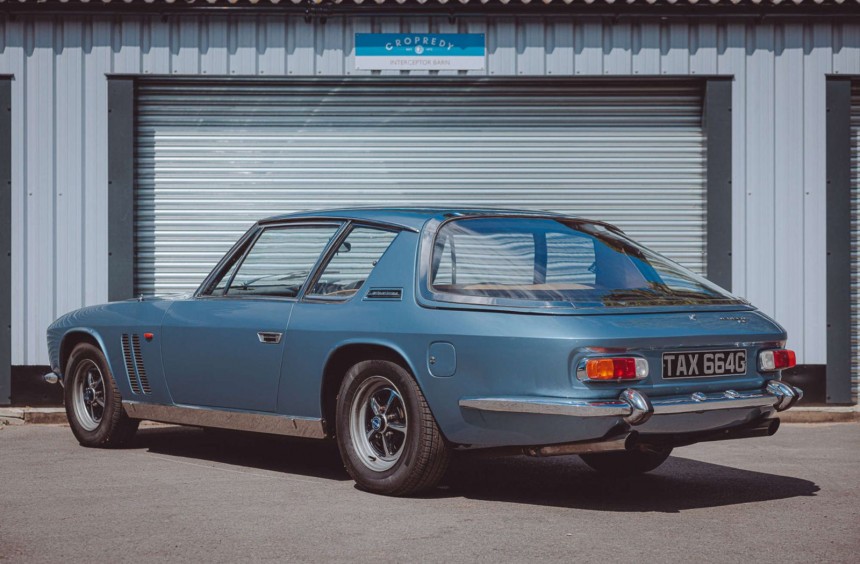Unfairly relegated to the back pages of automotive history books, the Jensen FF was an innovative British grand tourer that introduced ABS and AWD to the world of sports cars.
Apart from the established names like Rolls-Royce, Bentley, Aston Martin, Jaguar, and Land Rover, the British automotive industry gave birth to other now-defunct carmakers that have produced some impressive models. Arguably the most interesting of these long-forgotten brands was Jensen Motors.
Initially founded in 1922 as W J Smith & Sons Limited, the company produced bodies for several truck manufacturers in the UK. With the hiring of custom car builders Alan and Richard Jensen, the business expanded to fabricating bespoke car bodies. By the mid-1930s, the brothers bought the majority stake and renamed the company Jensen Motors.
As early as 1938, in addition to bodies, customs (including a very famous Ford made for Hollywood legend Clark Gable), and commercial vehicles, Jensen was also producing its own cars. Unfortunately, everything came to a halt about a year later when the Second World War broke out. The company contributed to the war effort by building several tank components, such as turrets, as well as ambulances and fire trucks.
After WWII ended, Jensen managed to survive by developing commercial vehicles and buses, but they also built a luxury sedan called PW (Post War). With the addition of promising designer Eric Neale, the company began developing innovative fiberglass-bodied grand tourers during the 1950s. Models like the 541 series and the blistering-fast C-V8 were praised for their performance, handling, and build quality, which helped boost Jensen’s popularity and provided enough funds to increase the company’s focus on sports car manufacturing.
By the mid-1960s, Jensen was developing a replacement for the Chrysler big block-powered C-V8, which was one of the quickest cars of its era in terms of acceleration, sprinting from 0 to 60 mph (97 kph) in 6.7 seconds. Called Interceptor, a nameplate previously used for an unrelated 1950s model, the new car was introduced in 1966 as a legitimate rival to the world’s most exquisite grand tourers.
With a fiberglass body designed by the famous coachbuilder Carrozzeria Touring, the Interceptor looked Italian, oozed British luxury, and offered muscle car performance. Like its predecessor, it was powered by a series of Chrysler V8s, with the most powerful becoming available in 1971. This mighty engine was a 440-ci (7.2 liters), triple-carb Six Pack rated at 385 hp (390 PS).
The Interceptor became Jensen’s most successful model and helped make the manufacturer famous worldwide. Although it was by no means cheap, it was so good that the company sold it in several European markets as well as the U.S.
Apart from the standard RWD Interceptor, Jensen also developed a closely related yet much more advanced version called FF. The name stands for Ferguson Formula, which was an innovative AWD system created by Ferguson Research Ltd that made this model the world’s first non-off-road AWD production car.
Like earlier 4WD systems, the Ferguson Formula used a central differential to distribute torque to both axles. But what made it innovative back in the sixties was the use of two one-way clutches that enabled it to divide torque unequally. Thus, 37% of the torque was set to the front wheels, while 63% went to the rear, a ratio that helped the FF handle impeccably, regardless of weather conditions.
Legend has it that when Audi started developing its Quattro system, its engineers sourced a Jensen FF, dismantled it, and extensively studied its AWD system. Furthermore, rumors have it that both Subaru and AMC drew inspiration from the FF for the development of their first AWD models, the Leone and Eagle.
Apart from AWD, the FF was also the first production sports car to feature an anti-lock braking system (ABS). Called Maxaret and originally developed by Dunlop for aircraft use, it was adapted to work with the Ferguson Formula system to prevent the wheels from locking. Although crude when compared to modern versions, which employ electronics, the fully-mechanical system proved to work extremely well. Sports Illustrated featured the Jensen FF in a 1960s article and called it the safest car in the world.
In terms of looks, the FF was nearly indistinguishable from the regular Interceptor, especially for those who were unfamiliar with the models. It used the same elegant Carrozzeria Touring-designed body, albeit with minor changes. The most obvious was the use of twin vents behind the front wheel arches.
As standard, the FF came with an equally-elegant interior with woodgrain trims and fine leather upholstery. The car had a bulky transmission tunnel because of the AWD system’s added components, but Jensen designers managed to cleverly incorporate a storage compartment within it. On top, the cover was also upholstered in leather and acted as an armrest.
In the vast majority of FFs, power came from the reliable Chrysler 383-ci (6.3 liters) B-series V8 which used to be the-go to Mopar performance engine in the U.S. until the 426 HEMI was unleased. Mated to a TorqueFlite A727 three-speed automatic, it was rated at a healthy 326 hp (330 PS), enabling the grand tourer to accelerate to 60 mph (97 kph) from a standstill in 7.7 seconds.
Jensen also built a handful of FFs with 440 Six Pack V8s which were usually available only on the RWD Interceptor. Even more impressive was a single, experimental car equipped with the legendary 426 HEMI. However, the added cost of importing the Elephant and the negative impact it had on the standard suspension system meant that the prototype never made it into production.
Way ahead of its time in terms of technical innovations, the AWD Jensen FF was one of the most exciting sports cars that money could buy between 1966 and 1971. Despite that, the British company only sold a little over 300 units, which was an extremely low figure, especially when compared to the 6,000 Interceptors that Jensen managed to sell.
The grand tourer’s starting price stood about 30% higher than that of the already-expensive Interceptor, which made it one of the most expensive cars in the world. Even if it was brimming with innovations, few were keen to pay so much for a vehicle that wasn’t built by an established European carmaker and came with a rather outdated American V8 instead of a motorsport-derived V12 like the one found in a Ferrari flagship.
Exorbitant price aside, the main reason why the FF was never a resounding commercial success was Jensen’s inability to deliver a left-hand drive version. That’s because the 4WD system’s front drive shaft ran along the left side of the chassis, preventing the use of an LHD front axle and steering column. This severely impacted sales outside of the UK, particularly in the United States, where the Interceptor was fairly popular among wealthy enthusiasts.
All this, as well as Jensen’s lack of prestige, led the FF to slide into oblivion shortly after production ended. One of the most innovative sports cars of its era, it’s currently unknown to the vast majority of enthusiasts, but on the bright side, owning one doesn’t require a seven-figure budget. According to multiple classic car dealers, the average value of a Jensen FF in good shape currently stands around $90,000, which is extremely low for a rare piece of automotive history.
You can learn more about this fantastic car in the YouTube video below by Tyrrell's Classic Workshop.
Initially founded in 1922 as W J Smith & Sons Limited, the company produced bodies for several truck manufacturers in the UK. With the hiring of custom car builders Alan and Richard Jensen, the business expanded to fabricating bespoke car bodies. By the mid-1930s, the brothers bought the majority stake and renamed the company Jensen Motors.
As early as 1938, in addition to bodies, customs (including a very famous Ford made for Hollywood legend Clark Gable), and commercial vehicles, Jensen was also producing its own cars. Unfortunately, everything came to a halt about a year later when the Second World War broke out. The company contributed to the war effort by building several tank components, such as turrets, as well as ambulances and fire trucks.
After WWII ended, Jensen managed to survive by developing commercial vehicles and buses, but they also built a luxury sedan called PW (Post War). With the addition of promising designer Eric Neale, the company began developing innovative fiberglass-bodied grand tourers during the 1950s. Models like the 541 series and the blistering-fast C-V8 were praised for their performance, handling, and build quality, which helped boost Jensen’s popularity and provided enough funds to increase the company’s focus on sports car manufacturing.
Jensen Interceptor: the successful model that made the FF possible
With a fiberglass body designed by the famous coachbuilder Carrozzeria Touring, the Interceptor looked Italian, oozed British luxury, and offered muscle car performance. Like its predecessor, it was powered by a series of Chrysler V8s, with the most powerful becoming available in 1971. This mighty engine was a 440-ci (7.2 liters), triple-carb Six Pack rated at 385 hp (390 PS).
The Interceptor became Jensen’s most successful model and helped make the manufacturer famous worldwide. Although it was by no means cheap, it was so good that the company sold it in several European markets as well as the U.S.
Ferguson Formula
Like earlier 4WD systems, the Ferguson Formula used a central differential to distribute torque to both axles. But what made it innovative back in the sixties was the use of two one-way clutches that enabled it to divide torque unequally. Thus, 37% of the torque was set to the front wheels, while 63% went to the rear, a ratio that helped the FF handle impeccably, regardless of weather conditions.
Legend has it that when Audi started developing its Quattro system, its engineers sourced a Jensen FF, dismantled it, and extensively studied its AWD system. Furthermore, rumors have it that both Subaru and AMC drew inspiration from the FF for the development of their first AWD models, the Leone and Eagle.
An innovative mix of luxury, performance, and reliability.
In terms of looks, the FF was nearly indistinguishable from the regular Interceptor, especially for those who were unfamiliar with the models. It used the same elegant Carrozzeria Touring-designed body, albeit with minor changes. The most obvious was the use of twin vents behind the front wheel arches.
As standard, the FF came with an equally-elegant interior with woodgrain trims and fine leather upholstery. The car had a bulky transmission tunnel because of the AWD system’s added components, but Jensen designers managed to cleverly incorporate a storage compartment within it. On top, the cover was also upholstered in leather and acted as an armrest.
In the vast majority of FFs, power came from the reliable Chrysler 383-ci (6.3 liters) B-series V8 which used to be the-go to Mopar performance engine in the U.S. until the 426 HEMI was unleased. Mated to a TorqueFlite A727 three-speed automatic, it was rated at a healthy 326 hp (330 PS), enabling the grand tourer to accelerate to 60 mph (97 kph) from a standstill in 7.7 seconds.
Jensen also built a handful of FFs with 440 Six Pack V8s which were usually available only on the RWD Interceptor. Even more impressive was a single, experimental car equipped with the legendary 426 HEMI. However, the added cost of importing the Elephant and the negative impact it had on the standard suspension system meant that the prototype never made it into production.
Unfortunately, it was never a commercial success
The grand tourer’s starting price stood about 30% higher than that of the already-expensive Interceptor, which made it one of the most expensive cars in the world. Even if it was brimming with innovations, few were keen to pay so much for a vehicle that wasn’t built by an established European carmaker and came with a rather outdated American V8 instead of a motorsport-derived V12 like the one found in a Ferrari flagship.
Exorbitant price aside, the main reason why the FF was never a resounding commercial success was Jensen’s inability to deliver a left-hand drive version. That’s because the 4WD system’s front drive shaft ran along the left side of the chassis, preventing the use of an LHD front axle and steering column. This severely impacted sales outside of the UK, particularly in the United States, where the Interceptor was fairly popular among wealthy enthusiasts.
All this, as well as Jensen’s lack of prestige, led the FF to slide into oblivion shortly after production ended. One of the most innovative sports cars of its era, it’s currently unknown to the vast majority of enthusiasts, but on the bright side, owning one doesn’t require a seven-figure budget. According to multiple classic car dealers, the average value of a Jensen FF in good shape currently stands around $90,000, which is extremely low for a rare piece of automotive history.
You can learn more about this fantastic car in the YouTube video below by Tyrrell's Classic Workshop.
